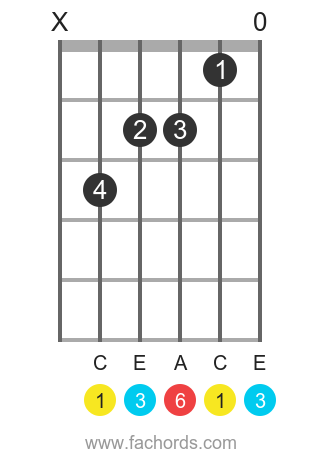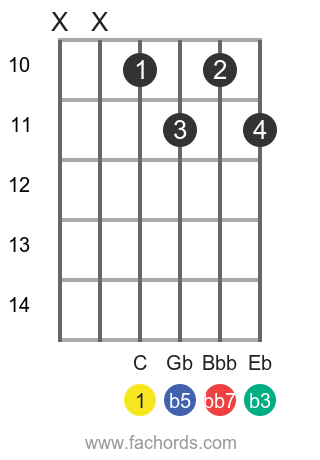Enharmonic Intervals Demystified
Different names for the same sound, why?
In this post, we're going to clarify a topic that often confuses many novice guitar players: enharmonic intervals. From a beginner's perspective, enharmonics are tricky because they have different names but the same sounds, how is that possible?
Actually, enharmonic intervals are easier than it seems.
Intervals
Intervals, as we have already seen in our posts about fretboard intervals and chord construction, are simply a distance between two pitches.
An interval has a quality and a quantity.
Interval Quantity
Let's start with the quantity: to determine the quantity of an interval, we simply count how many notes there are between our two pitches,counting the notes of the major scale: C, D, E, F, G, A, B and C.
Some examples:
- C to D: 2 notes, this is a Second Interval
- C to E: 3 notes, this is a Third Interval
- E to G: 3 notes, this is a Third Interval
- A to E: 5 notes, this is a Fifth Interval
- G to F: 7 notes, this is a Seventh Interval
- E to C: 6 notes, this is a Sixth Interval
So, we can now show the complete table of Interval quantities
| Name | Count | Example |
|---|---|---|
| Unison | 0 | C to C |
| Second | 2 | C to D |
| Third | 3 | C to E |
| Fourth | 0 | C to F |
| Fifth | 0 | C to G |
| Sixth | 6 | C to A |
| Seventh | 7 | C to B |
| Octave | 8 | C to C |
Interval Quality
When dealing with interval quantities, we have 7 different options (the 7 notes of the major scale).
But in an octave there are 12 semitones, so we use interval qualities to get more specific.
Here are the possible qualities for an interval
- Minor
- Major
- Perfect
- Augmented
- Diminished
There are some rules that apply to qualities:
- We don't use major and minor qualities with 4th and 5th intervals (that is, major 4th or minor 5th do not exist)
- We don't use perfect quality with 2nd, 3rd, 6th and 7th intervals
- A minor interval is one half-step smaller than a major interval
- An augmented interval is one half-step larger than a perfect interval
- A diminished interval is one half-step smaller than a perfect interval
So all the possible combination we can have are:
- Minor, Major, Augmented and Diminished Seconds
- Minor, Major, Augmented and Diminished Thirds
- Perfect, Augmented and Diminished Fourths
- Perfect, Augmented and Diminished Fifths
- Minor, Major, Augmented and Diminished Sixths
- Minor, Major, Augmented and Diminished Sevenths
Here below you find a comprehensive table of interval quantities and qualities
| Quality | Interval | Half-Steps | Example |
|---|---|---|---|
| Unison | 0 | C to C | |
| Minor | Second | 1 | C to D# |
| Major | Second | 2 | C to D |
| Minor | Third | 3 | C to Eb |
| Major | Third | 4 | C to E |
| Perfect | Fourth | 5 | C to F |
| Augmented | Fourth | 6 | C to F# |
| Diminished | Fifth | 6 | C to Gb |
| Perfect | Fifth | 7 | C to G |
| Minor | Sixth | 8 | C to Ab |
| Major | Sixth | 9 | C to A |
| Minor | Seventh | 10 | C to Bb |
| Major | Seventh | 11 | C to B |
| Octave | 12 | C to C |
Enharmonic Intervals
In the table above, you can notice that there is an interval 6 half steps wide that is listed as Augmented 4th and Diminished 5th both.
This is an enharmonic. There are the same notes on guitar, but have different names.
The key to deal with enharmonics is to count on interval quality:
Between the intervals C to Eb and C to D# there are 3 half steps, but with a difference:
- From C to Eb there are 3 notes, so this is a Third Interval
- From C to D# we count 2 notes, so this is a Second Interval
Now let's analyze qualities:
- C to Eb is a Minor Third because it's a 3 half-step interval (by looking at the chart above)
- C to D# is an Augmented Second, because it's 1 half-step wider than a Major Second
That's is: they are 3 half-steps large both, but with 2 different names because they have different quantities.
An example enharmonics with chords
Let's compare these 2 chords: C Major Sixth and C Diminished Seventh
C Major Sixth

This chord is composed of the Root (C), Major Third (E), Perfect Fifth (G) and Major Sixth (A)
C Diminished Seventh

This chord is composed of the Root (C), Minor Third (Eb), Diminished Fifth (Gb) and Diminished Seventh (Bbb)
Did you spot where the enharmonic is?
The note A in the first chord and the note Bbb in the second chord have exactly the same length, 9 half-steps, but they have different names because of the note involved:
C to A is a Sixth Interval (we count 6 notes), while C to B is a Seventh Interval (7 notes).
You find more examples of chords structure in our online guitar chord library.
Enharmonics - Conclusion
I hope to have clarified a bit what enharmonics are and how they related to intervals qualities.
At the end of the day, it strongly depends on the context in which you're operating: if you're building a seventh chord you'll have a certain set of intervals; in the case of different chord type you'll have a different intervals set.
Stick to the counting notes method (quantity) and your life will be easier.
Click here to stay updated on new tutorials and music learning resources.